#virtual try-on India
Explore tagged Tumblr posts
Text
🛍️ Online Shopping Trends 2025: How India Is Redefining E-Commerce
📦 Rise of Hyperlocal Shopping In 2025, online shopping is faster and more local than ever. From kirana stores to street vendors, everyone is now online via platforms like ONDC, Jiomart, Amazon Local, and Meesho. Key trends: Same-day delivery from neighborhood shops QR-based shopping from local markets Whatsapp catalog shopping COD still dominant in Tier 2 & Tier 3 cities 📱 Shopping via…
#affordable online gadgets#AI shopping India#best local brands#BNPL India 2025#D2C shopping India#eco-friendly packaging India#fashion online trends#hyperlocal delivery#image search shopping#Indian e-commerce growth#influencer shopping#instant delivery apps#live shopping India#online return policy India#online shopping India 2025#regional products online#shop local trend#smart home devices online#social media marketplace#subscription box India#sustainable shopping online#trending e-commerce#virtual try-on India#WhatsApp shopping
0 notes
Text
consider me a house fandom Australian Cultural Liason: here’s some chase family christmas headcanons!
rowan and his mum definitely drag chase and retcon sister along to midnight mass on christmas day. it, as the name suggests, starts at midnight (imagine sitting awake in lousy wooden chairs on CHRISTMAS EVE/DAY as like. an eight year old. catholicism is stupid) and includes receiving communion (the little wafer, and the wine if you’re old enough). there’s a roman catholic communion chant specific to midnight mass for all you latin enjoyers (me): in splendoribus sanctorum, ex utero, ante luciferum, genui te (in the brightness of the saints, from the womb, before the day star, i begot you)
it’s hot and dry this time of year in australia, so spending the whole of christmas day or boxing day at the beach or the pool is common. i imagine chase and his sister competing in made-up competitions — “i bet i can make the water splash taller with a cannonball!” — with their mum as a judge
“classic catches” is a common one: basically, one person throws the cricket ball out across the pool, and the other takes the most spectacular jump/dive they can to try and catch it before landing in the water (there’s a bluey episode about it). we see chase catch pens/case files/miscellaneous objects a few times throughout the show, so i think he’s honed the skill through games like this lol
bundaberg ginger beer is a classic aussie drink for the summer. it’s not alcoholic, and kind of a stronger ginger ale, made in queensland. virtually synonymous with summer. chase feels like an adult holding the heavy glass bottle, sipping it by the pool, trying not to screw up his face at the strong taste
his family have a christmas day lunch with. yes: prawns on the barbecue. but if i catch any of you calling them shrimp i will have harsh words. you’ve been warned
i have no idea whether other places do this, but christmas meals in australia usually feature ‘christmas crackers’ or ‘bonbons’ (there is a bluey episode about these too). they’re paper and kind of shaped like wrapped tootsie rolls, with trinkets, paper crowns, and little joke cards inside the middle. they’re called crackers because you open them by pulling on either side with someone else, tug-of-war style, and when one side breaks, a little fire cracker lights and makes a small explosion with a crack sound. i think chase looooooves the stupid little crowns and wore them all day as a kid.
on boxing day every year, australia hosts a match of test cricket against another international cricket team. cricket is a slow sport (the boxing day test is like five days long), but visit any aussie household with an adult man present, and the boxing day test is absolutely on the tv. it’s one of those things that make most australians patriotic, even if for the rest of the year they couldn’t care less. i don’t think chase was a cricket kid, but he liked watching craig mcdermott’s fast-bowling against india in ‘85. gave him something to talk about with his mates when school started again.
that said, rowan absolutely had tickets to the big game almost every year, either as work gifts or consolation for his wife and kids when he couldn’t (read: didn’t want to) be there during the holiday celebrations. since it’s held at the melbourne cricket ground, chase probably attended a few. they’re gruelling all-day matches, and not exactly entertaining for young kids, but chase probably looks back at the memories fondly: his mum slathering him with zinc and bug spray, constantly yelling at him to keep his hat on, promising to buy him an icecream at half-time
chase seemed pretty aware of his surroundings as a kid, at least in his home. he never failed to catch his mum’s solemn expressions while cleaning up wrapping paper and preparing platters of fruit and cold cuts, while retcon sister played happily with her presents. rowan never labelled his gifts “from Santa”, not even when retcon sister was young enough not to know: their mum always did.
every year, chase was jealous of retcon sister about something. did she get a larger slice of panettone? did she get one more gift from rowan? did she get to be blissfully ignorant on christmas day, swimming and snacking and not having to worry about how many times mum had topped up her white wine, or how heavy her sighs became as the day got hotter? their competition wasn’t always friendly — sometimes he got pissy, and spat cruel insults at her until she ran off to cry in private. neither of them ever told their mother
#me begging the fandom to australianise their chase writing#diversify the portfolio etc#rowan was probably there for christmas about 20% of the time#used his fame and work as an excuse#these are headcanons for a pretty young chase#before shit well and truly fell apart#there’s still plenty to work with tho#god midnight mass is so FUCKING boring y’all#i also imagine some czech food integrated into their christmas eve/day meals but i cannot contribute any cultural knowledge on that front#robert chase#house md#malpractice md
77 notes
·
View notes
Text
A MISSING PIECE IN THE BIG BANG THEORY HAS SURFACED??
Blog#411
Wednesday, June 19th, 2024.
Welcome back,
Combining different pieces from Big Bang cosmology could help explain an issue we have today.
The Hubble constant, the speed of expansion of our universe, is not observed with consistency.
These scientists suggest that not-well-understood quantum gravity could account for the gap.

In research published earlier this year, physicists from the University of Hyderabad in India say they’re on the path to solving one of the universe’s biggest outstanding problems. Since Edwin Hubble realized the universe is always expanding nearly 100 years ago, scientists have used the “Hubble constant” in calculations on virtually every scale in the universe.
But today, estimates for the Hubble constant don’t always align, with a difference of up to 10 percent between calculations made using different methods. (When someone at NASA mixes up meters and yards and loses an entire spacecraft, that’s not even a full 10 percent deviation.)

The paper appears in the peer reviewed journal Classical and Quantum Gravity. The journal has an ongoing, periodically updated “focus issue” specifically about this measurement tension, and the editors explain the problem there—scientists can’t say for sure that the different Hubble constants measured are actually different, rather than just observation or calibration issues.
But the authors of the new paper, physicist P.K. Suresh and his research fellow (referred to as just Anupama B.) say that most measurements taken now are reliable. Instrumentation only continues to improve—we’ve all seen those generation-defining, poster-quality photos of the far-out planets, for example. If the measurements on the local and faraway levels are indeed sound, then something is missing.

It’s here where they introduce quantum gravity as a possible factor. This variable—which, to be honest, is another enigmatic “placeholder” in some ways—could close the gap in Hubble constant observations. That’s because, as the authors propose, quantum gravity could have affected the rate of change at which the universe expanded itself. When a constant can have a variable rate of change, it’s easy to see why researchers tend to drop the ‘constant’ label and instead call the fatcor simply H0, H1, and so on to designate which version of the measurement is in play.

The researchers explain that during inflation—the rapid growth of the universe immediately following the Big Bang—there may not have been a single, uniform inflation zone. Instead, more and more scientists are theorizing around the idea of “multi field” inflation. The idea originated to explain another measurement discrepancy: the number of particles in particular places or times, compared with the massive speed of inflation overall.

If a theory could help explain one gap in our codified equations for how inflation works, it makes sense to try that theory to find other missing pieces. These researchers used what is called the hybrid inflationary model, which describes two fields: one inflating and one rolling over like a waterfall. By accounting for quantum gravity, they found they were able to reconcile H0—the current Hubble constant—with both H1 (during inflation) and HT (during phase transition). Just one adjusted equation with a parameter for quantum gravity could draw a curve that includes all three data points.
Originally published on www.popularmechanics.com
COMING UP!!
(Saturday, June 22nd, 2024)
"WHAT IS THE OLDEST BLACK HOLE IN OUR UNIVERSE??"
#astronomy#outer space#alternate universe#astrophysics#universe#spacecraft#white universe#space#parallel universe#astrophotography
74 notes
·
View notes
Text
This is a different issue than learning a language out of necessity (or at least for a significant material incentive) but even when it comes to language learning as a hobby there are obvious disparities between languages associated w more economic power and others.
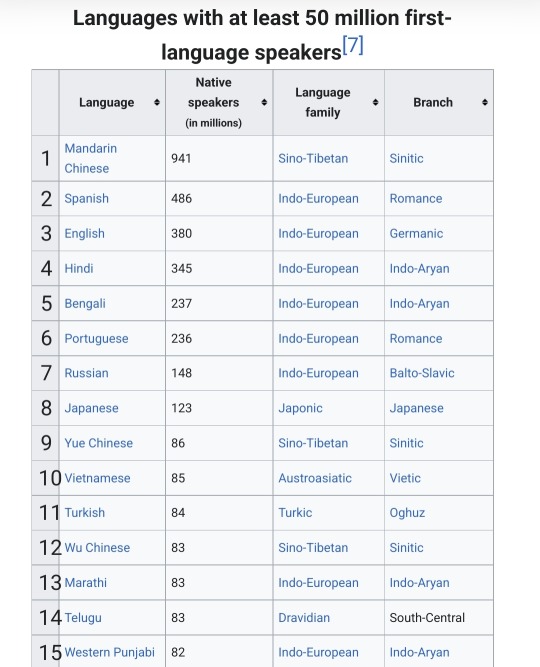
If you live in a Western country, have you EVER met someone studying Bengali (except maybe a heritage speaker trying to improve)? How many universities offer it? Fifth most common mother tongue in the world! Most usamericans probably couldn't even name Marathi or Telugu off the top of their heads if you asked them what languages are spoken in India. And even Hindi is rarely taught! Of course part of that is because if you are doing business or international development in India, your Indian coworkers likely speak English, so why learn Hindi? (I know lots of Indians don't speak Hindi or it isn't their primary language, but my point is that there's a significant disparity in the expectations for knowledge of second languages here.) If you are a westerner you can have an entire career associated with another country or culture without being able to string a sentence together in its language, and there's virtually no curiosity about other cultures—again, how many people have you encountered who have studied an Indian language to any extent (if you are a westerner), unless they have a family connection to India? And people learn Mandarin Chinese for business, but many people probably don't know the terms Yue Chinese and Wu Chinese.
28 notes
·
View notes
Text
What did happen between John and Paul in India?
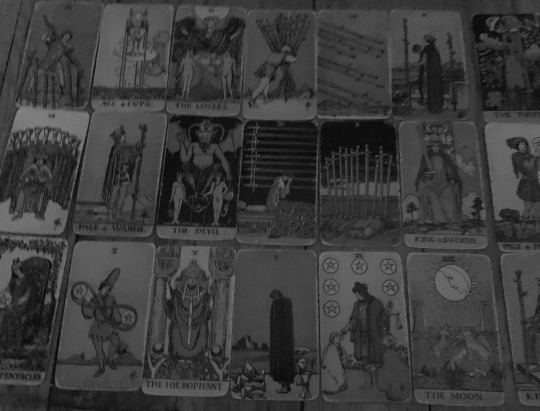
This was made for entertainment purposes only. Don’t sue me Paul (or Yoko (or Sean).
-
Check my readings! Did McLennon ever happened here What John thought about Paul here What Paul thought about John - part 1 here | part 2 here What happened between John and Paul in Paris here What John thought of Paul's appeareance here What Paul thought of John's appeareance here John's feelings + In my life + Paris' tea here Paul's feelings + Paris' tea here Was Paul jealous of Stuart? here Was John jealous of Tara? here Was Paul jealous of Cynthia? here Relationship - questions related to that topic here What happened between John and Paul in Keywest 1964 here George's pov here MORE here
-
Some notes:
Please don’t be dumb and harass the people mentioned in this interpretation. If you have the information - you have it, good. Enjoy their love in the fandom ❤️ do your fics, do your art.
I know that this is not everybody, but I feel we are dealing with very delicate matters.
It took me a lot of days doing this because I didn’t want to sound like a fic. I know many people have their theories, even myself! So that’s why I repeated some questions, and did it in different days. Also, I didn’t read the answers, so when something matches, it’s surprising even for me.
That’s all. Now, enjoy!
_
Answer 1:
What the cards are telling me at the beginning, is that this trip was made to do something about a relationship. It had been very difficult to try to continue, since there was a feeling that someone was very confident, opposed to someone very depressed. The depressed one didn’t know what to do anymore because he needed a sense of stability, security. He felt that this wasn’t enough, and even that the other one was mocking him, for his neediness. I think this person couldn’t see objectively at all what was happening, because, even If was part truth what he thought, the thing is, it wasn’t “that” big.
I think he tried for once to be really honest and just ask what was this all about. “Do you love me?”. I think the answer didn’t come immediately. And wasn’t even satisfying. I think the other part thought that he say it back, but he didn’t properly. So there was this part that thought that was being fooled, and the other one that thought that everything was okay. I think the “depressed” one thought something like “anyway, I knew this would happen”, and tried very hard to don’t have any feelings, and just “enjoyed” the trip. I think then is when he thought “I need to do something”. It was like that moment put him back in order to do new things. This was a decision for his own happiness. “I’m going to fall in love with her”. What are telling me the cards after is how he stuck with his decision, even if it wasn’t the best. The other part is showed at the end. Knowing that he can’t do anything about it.
Answer 2:
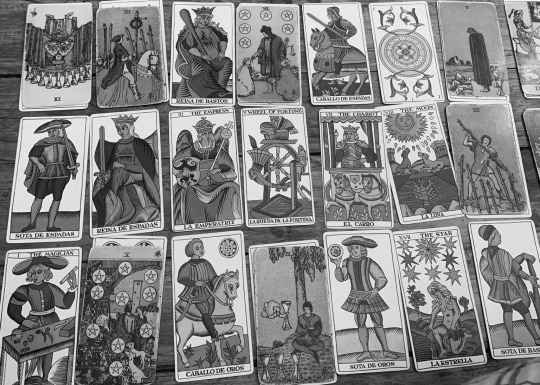
I think that at the beginning was a sensation of something not being complete. That some of them wanted more, that the relationship wasn’t balanced. He wanted to do something about it, but he couldn’t do it. “We have to left all bullshit aside, to have the relationship we really want” , to leave the imbalances behind, but I can’t face the truth. Even when the truth is very obvious. It’s difficult to face the truth when there are things that escape our control, and we know that this always is going to be like this. But even with those feelings, he decided anyways to say what he wanted, and thought that everything would be good. So he did it. But it was “good” for a short time. Then everything went to hell. It’s like all this closeness was virtual. Was this proposition reciprocated? Yes. Could be fulfilled? No. The thing is, this person felt tricked, and it was like “I have nothing to do here” “Is he even regretting his attitude?” “Well, I DON’T regret it what happened, but I did so much to receive nothing” “You never loved me” “I’m going to be happy. WITHOUT YOU. I don’t care. I will fight for it”. He didn’t care if he felt confused, or trapped, or whatever would happen. He would do what he needed to do.
Why John felt depressed before going to India?
I forgot to take a picture here…sorry!
I think John felt depressed because he could see clearly the future: he could see himself being happy, with love, with opportunities, but at the same time, his reality was heavy: he felt abandoned, incapable of doing things, and even betrayed. I think it was difficult for him to forget that “betrayal”, and tried to tell (Paul) what he thought. I think the answer was the same as before. “Everything is okay”. I think John eventually thought that this wasn’t enough. The relationship was imbalanced, Paul was being arrogant. It was very difficult to even think what to do, because in a way, he felt happy. I think he couldn’t see that Paul actually loved him.
Is the “betrayal” that John felt about Paul marrying Jane?
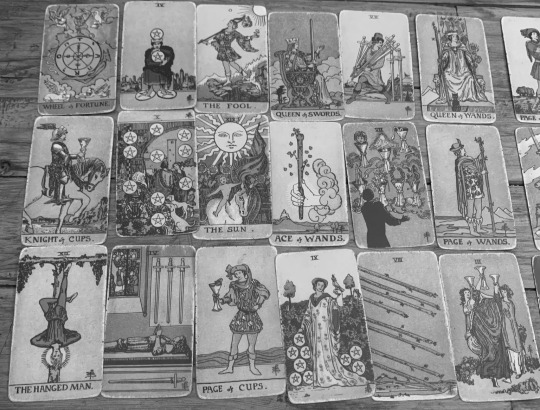
I think some of his depression was because of that event.
The cards start telling me about the feeling of not wanting to change anything, and even ignoring the signs: he thought that from the most part Paul wasn’t serious with Jane, but he saw how his attitude changed. He was more considerate and present in her life. I also think John intuitively knew that what Paul wanted. He wanted to construct something. Did John say or did anything about this? No. I think he just let those thoughts cold and tried to “enjoy” their time. “Everything is going to be alright”. Until eventually it wasn’t. He couldn’t stand the feeling of changing. It was like he was standing behind a door, but not wanting to open it. I think when Paul proposed to Jane, it wasn’t a “serious” commitment proposal. But in John’s head was a bigger issue. John was heartbroken. He thought that having somebody else would soft his feelings, but it didn’t.
It’s very weird, because, when I answered this question, for me it wasn’t like this was the “bigger” issue. Was an issue? Yes. But not the main one.
-
A lot of theories said that what “ruined” Paul and John’s relationship in India was sex. So I asked about that multiple times, because as I said, I didn’t want it to sound like a fan fiction.
Was India the first time they had something sexual?

I think yes.
The cards start telling about how much they wanted this to happen, but they couldn’t because they thought they needed to use their heads. After some time and reflection, they thought that what they had wasn’t enough, they wanted more. But the thing is, it had to pass a lot of time until they realised that wanting something more for the other, wasn’t wrong, after all, they loved each other, right? But the thing is, there was a fear of almost losing yourself in the other person. “What is he going to do with me?” When the opportunity occurred, it changed everything. There was a immediate feeling of guilty, also, it trigger their self-defenses (one was like “are you sure?”, the other was “yes, but we need to be careful”); I think at the beginning there was absolutely feelings of passion and satisfaction, but one of the parts knew it wasn’t real, it was something that was happening in like, a bubble. In the outside world, they would still be old John and Paul. I think that one of the parts couldn’t see clearly, was the love that the other had for him, or maybe, he saw it, but it was too much. Any of the options made the “loving” part heartbroken.
Did they had a sexual encounter before India?
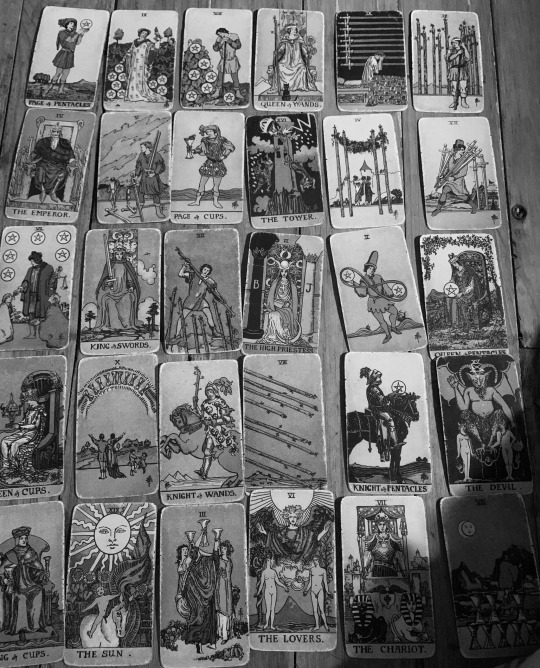
Yes, but I would say it wasn’t that important as India. Why?
What the cards start telling is that there was a proposal to do something, but the other part wasn’t very sure. He thought that somebody could caught them, something bad could happen. But it isn’t like he didn’t like the idea. He liked the idea very much. There was suddenly a moment were they could do something, but it had to be very quickly, very secret. It wasn’t enough. They obviously wanted more, but how they could do that? There was an opportunity when everything they wanted happened, but also, they had to leave it. I think at that part, the cards are talking about India.
Did J and P have more sexual encounters?
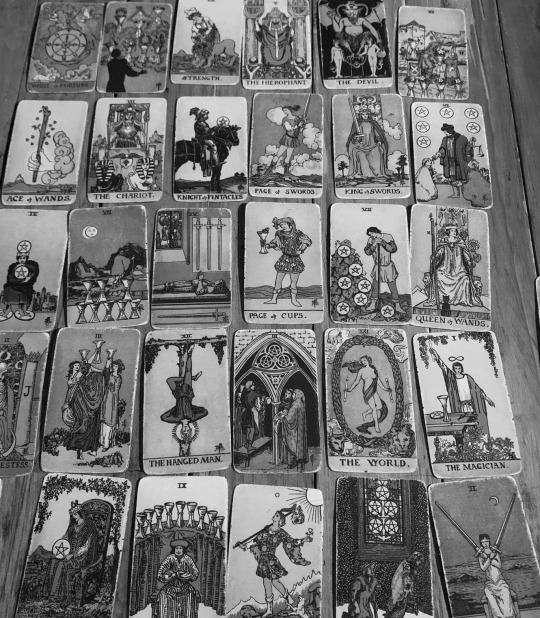
Yes. I can’t know about how many times, but I found interesting, that the cards are telling me about a particular time.
What the cards are telling me at the beginning, is the desire that they felt, a desire that had to be controlled, no matter how much love they felt. I think one of them was very eager to have something, even very sure that he wanted it, but the other part told him that he needed to think more about these things, “you need to remember what we are/ we are just bandmates”, so the other part “regretted it”. It had to pass some time until another proposal came. I don’t know If it was the same person, but this time, the answer was something like “I don’t know about it, what is she going to say?”, but after some time agreed. They had their good time, but immediately overthought about the moment. The one of the proposal thought that this would fix everything, but It didn’t. So he felt like a fool, while the other thought that now HE had the power.
The one that did the proposal felt very depressed, because even when he liked what it happened, he also felt love for him. When this happened, the one that did the proposal decided to work on himself. Be happy (without him).
___
Others
What did John expect from Paul in India?
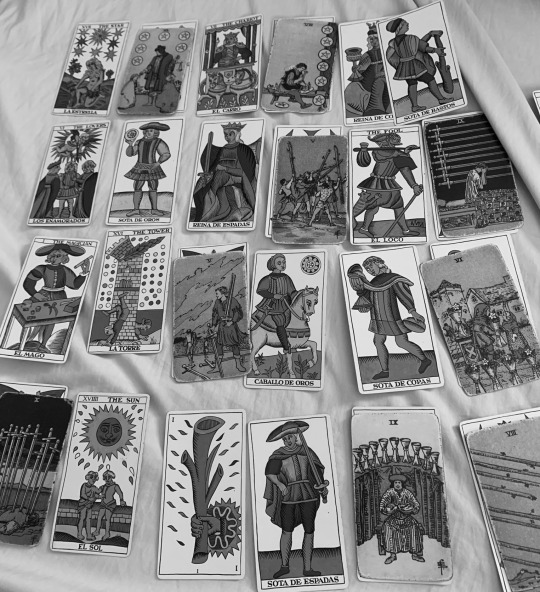
I think what John expected of Paul in India was some prove that this was actually “something”. What I mean is, that at the beginning of this trip, John have actually reflected about their relationship, and was very sure about what he felt. John thought a lot of how to talk to Paul about this. The thing is, the answer that he received wasn’t what he expected at all. He really thought that this trip would mean a new beginning.
What did Paul think that happened between him and John in India?
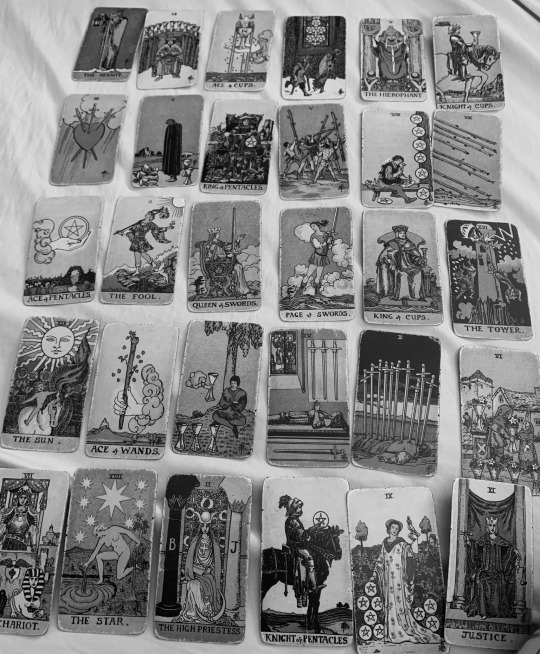
I think when John told him what he thought, Paul felt he received what he always wanted. But at the same time, it made him very unhappy. I think it has to be because of the (ALLEGED) internal homophobia that he felt, but it was very hard to say something, even when he felt the same. So he almost acted like nothing happened, but really tried to get any chance he could to be with John. Worst was when they did have a very good time, but he couldn’t say anything. He thought that, maybe being this close physically would be enough for John, but it wasn’t . He noticed that John was “weird”, but didn’t confront him about it. Paul felt miserable, because John didn’t seem to be interested anymore.
What did Paul think that would happen between him and John in India?
I forgot to take a picture here…sorry!
I think Paul just expected to renew the relationship, in a way that everything would be good. The current state of the relationship for him was difficult, but he didn’t know how to act. It was like everytime he tried to do something, he couldn’t. And when he tried, it was shit. So yeah, I don’t think Paul even expected what would happen 🥲.
How did Paul feel when John told him that he loved him?
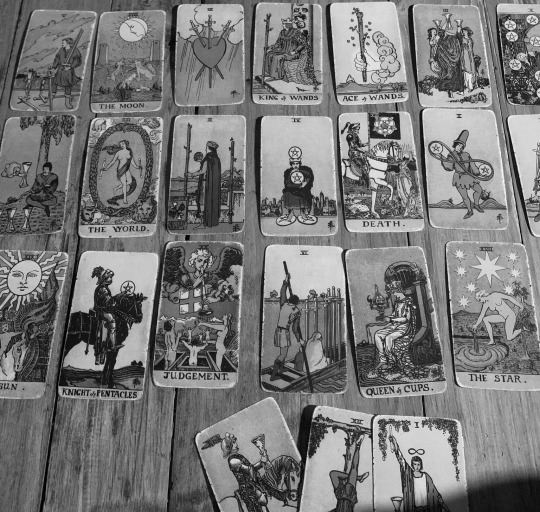
I think at first, Paul thought that this was some kind of a cruel joke from the destiny. Because he liked what he experienced. But didn’t know what to do about it. He surely knew that he would never forget it.
In his mind was the happiness of knowing that he was loved, but also, didn’t act on it, since he knew he had to think about anything else. There was some promises he made, some rules to follow, things that would made his life “happier” and “easier”, but I also think there was fear, lots of fear to start something new, something so delicate and pure. I think he knew that this would be very difficult, and them, even when they could love each other so much, would never “normally” work. It would never be enough. But that doesn’t mean that he wouldn’t try to do something, the thing is, it seems that was too late.
_________
I hope you like this one. I really tried to do it more “real”, even when a lot of these interpretations match with theories. I found it fascinating.
Thank you very much for your support ❤️
76 notes
·
View notes
Note
Shows or movies based on historic figures and events are hard to pull off if the goals are to be both entertaining and somewhat true to history. If we accept that some inaccuracies can't be avoided in order to appeal to audiences what would you consider cornerstones and pillars about Alexander and his history that can't/shouldn't be touched in order to paint a somewhat realistic picture in media based on him and his life?
How to Make a Responsible Movie or Documentary about Alexander
I saved this to answer around the time of the Netflix release. For me, there are four crucial areas, so I’ll break it down that way. Also. I recognize that the LENGTH of a production has somewhat to do with what can be covered.
But, first of all…what story is one telling? The story arc determines where the focus lies. Even documentaries have a story. It’s what provides coherence. Is it a political tale? A military one? Or personal? Also, what interpretation to take, not only for Alexander but those around him. Alexander is hugely controversial. It’s impossible to make everyone happy. So don't try. Pick an audience; aim for that audience.
MILITARY:
Alexander had preternatural tactical skills. His strategy wasn’t as good, however, especially when younger. Tactics can be a genius gift (seeing patterns), but strategy requires experience and knowledge of the opposition. The further into his campaign, the more experience he gained, but the cultures became increasingly unfamiliar. He had ups and downs. He was able to get out of Baktria finally by marrying Roxana. That was strategy, not tactics. He beat Poros, then made a friend of him; that’s strategy. Yet he failed to understand the depth of the commitment to freedom among the autonomous tribes south along the Indus, which resulted in a bloody trek south. And his earlier decision to burn Persepolis meant he’d never fully reconcile the Persian elite.
So, it’s super important to emphasize his crazy-mad tactical gifts in all forms of combat, from pitched battles to skirmishes to sieges. Nobody in history ever equaled him except maybe Subatai, Genghis Khan’s leading general. In the end, I think that’s a lot of Alexander’s eternal fascination. He fought somewhere north of 250 battles, and lost none (where he was physically present).
But HOW to show that? What battles to put on screen? Oliver Stone combined three into one + Hydaspes because he had only 2-3.5 hours (depending on which cut you watch). The Netflix series is going to show all four of the major pitched battles…or at least all 3 for the 6-episode first part. They had circa 4.5 hours to play with, but they cut out other things, like Tyre.
Another issue, from the filming/storytelling point-of-view is how to distinguish Issos from Gaugamela for the casual viewer. They’re virtually identical in tactics (and players on the field). So it made a fair bit of sense to me for Stone to conflate them. In a documentary, it’s more important to separate them, largely to discuss the fall-out.
Some v. important clashes weren’t the Big Four. Among these, the sieges of Halikarnassos and Tyre are probably the most impressive. But the Aornos Rock in India was another amazing piece. I’d also include the bridging of the Indus River to illustrate the astonishing engineering employed. Again, if I had to pick between Halikarnassos and Tyre, I’d pick Tyre. I was a bit baffled by Netflix’s decision to show Halikarnassos instead, but I think it owed to an early error in the scripts, where they had Memnon die there. I corrected that, but they’d already mapped out the beats of the episodes, so they just kept Halikarnassos. That’s fine; it was a major operation, just not his most famous siege.
Last, I really wish somebody, someday, will do something with his Balkan campaigns. What he did in Thrace and Illyria, at just 21, showed his iron backbone and quick thinking. It’d make a great “and the military genius is born” set-up, drama wise. But you could use the Sogdian Rock to show the clever streak, at least (“Find men who can fly” … “I did; look up.” Ha) Plus it has the advantage of being where he (maybe) found Roxana.
Last, he fought extremely well--wasn't just good at tactics. Being a good general doesn’t necessarily mean one’s a good fighter. He was. Almost frighteningly brave, so show that too.
RELIGIOUS:
Ya gotta deal with the “Did he really think he was a god?” thing, and the whole trip to Siwah. I obviously don’t think he believed he was a god; it’s one of the things I disliked about the Netflix show’s approach, but they were dead-set on it. I DO think he came to believe he was somehow of divine descent, but of course, that’s not the same as most moderns understand it, as I’ve explained elsewhere. It made him a hero, not a god on a level with Zeus, and to ME, that’s an important distinction that Netflix (and to some degree Stone) rode roughshod over.
But I’d like to see more inclusion of sacrifice and/or omen-reading—religion in general. Cutting the Gordion Knot (omens!). His visit to Troy (Netflix tackled that one). A really cool thing would be to make more of the lunar eclipse before Gaugamela. Again, Netflix touched on that, but it’s one of those chance events that might actually have affected a battle’s outcome, given how seriously the ancient near east took sky omens. (A solar eclipse once halted a battle.) The Persians were freaked out. Even his massacre of the Branchidai in Sogdiana was driven by religion, not military goals. Pick a couple and underscore them.
I give Stone big props for the sacrifice before the Granikos/Issos/Gaugamela battle. It was so well-done, I’ve actually shown it in my classes to demonstrate what a battlefield sphagia sacrifice would look like.
Alexander was deeply religious. Show it.
POLITICAL:
Ah, for ME the most interesting stuff surrounding Alexander occurs at the political level. Here’s where the triumph story of his military victories all went south. He knew how to win battles. He was less good at managing what he’d conquered.
In terms of a story arc, the whole period up to Gaugamela is really the “rise” of the story. Post-Gaugamela, things began to collapse. And I would pin the turn on PERSEPOLIS. Yes, burning it sent home a message of “Mission accomplished.” But he was selective about it. Areas built by Darius I were spared, Xerxes’ were destroyed: a damnio memoriae.
Problem: Persepolis embodied Persia, and ATG essentially shat on it. Not a good look for the man who wanted to replace Darius III. That he also failed to capture and/or kill Darius created an additional problem for him. Finally, his lack of understanding of how politics worked in Baktria-Sogdiana resulted in an insurgency. Bessos was going to rebel, regardless. But Spitamanes might not have. Alexander created his own mess up there.
Another matter to look at is why he created a new title—King of Asia—instead of adopting the Persian title (King-of-Kings). I don’t think that was a “mistake.” He knew perfectly well the proper Persian title (Kshāyathiya)…and rejected it. He adopted some Persian protocol, but not all of it. After the summer of 330, he was essentially running two parallel courts, which seemed to satisfy neither the Persians nor his own men. (Kinda like docudramas are a hybrid that seems to annoy perhaps more than satisfy.)
So I’d like to see this handled with some nuance, but it’s intrinsically difficult to do—even while, if done well, it would be the most interesting part of an Alexander story, imo.
So, what events, what events…3-4 leap out after Alexander’s adoption of some Persian dress. The Philotas Affair, the Pages Conspiracy, the Death of Kleitos, the marriage to Roxana. I’d show it all, although I could also understand reducing the two conspiracies to one, for time, in which case, the Philotas Affair because it resulted in the fall of Parmenion. But the fact there were two, not just one, tells a story itself.
What about the proskynesis thing with Kallisthenes? I’ve come to disbelieve it ever happened, even though it’s symbolic of the whole problem. So, weirdly, I’m of two minds about showing it. OTOH, it won’t be in my own novels. But OTOH, I could easily see why a showrunner or director might want to include it. And it certainly appears in several of the histories, including Arrian.
Then we have the two indisciplines (mutinies)…one in India that made ATG turn around, and another at Opis. They’re really two different things as one was an officer’s rebellion, the other the soldiers themselves. But will viewers be able to distinguish between them? It’s like the Issos/Gaugamela problem, or for that matter, the two conspiracies. They’re similar enough to confuse the casual viewer. “Didn’t we already see that?”
But if they were narrowed to one, how to choose? The mutiny on the Hyphasis provides an explanation for why he turned back. But the Opis event was more dramatic. The man jumped down into the middle of a rioting crowd and started (essentially) knocking heads together! So if I had to pick…Opis. The other might could be mentioned in retrospect.
PERSONAL:
Here are five things I think really OUGHT to be shown, or that I have yet to be pleased by.
1) Philip isn’t an idiot and should get more than 10 minutes of screentime. Oh, and show Alexander did learn things from him. Stone had to make his movie a Daddy-Issues flick, and the Netflix thing did very little with Philip as they wanted to get to the Alexander-Darius face off (which was the meat of their story). But there’s a very interesting love/competition story there.
2) Olympias is not a bitch and was not involved in Phil’s murder, although I can see why that is catnip to most writers. She did kill Eurydike’s baby and (by extension) Eurydike. One of the historians in the Netflix story (Carolyn, unless I misremember) talked about the rivalry between the two wives, at least. But I think ATG planned to marry the widow and Olympias got rid of her to prevent it. Now THAT’S a story, no? But they were in too much of a hurry to get to Persia.
3) Alexander was not an only child! He had sisters (and a brother) with whom he was apparently close…and a cousin who was his real rival. To me, missing that cousin rivalry overlooks a juicy personal/political story! Too often all the focus winds up on Alexander-Olympias-Philip-Eurydike-Attalos, but man, a more subtle showrunner could do a lot with the Alexander-Amyntas rivalry. But he’s constantly cut out. I can’t think of a documentary that actually addresses Amyntas except in passing (if at all)l
4) Hephaistion’s importance is a must, but I’d like to see him treated as someone with a personality and authority of his own, besides just as ATG’s lover. At least Netflix Went There onscreen with the love-story part, but otherwise, the writers couldn’t figure out what to do with him. Neither Stone nor Netflix really portrayed him as his own person. I do understand why they can’t show the whole cast of characters. I had to do weeding myself in the novels, but I’m annoyed Netflix showed only Hephaistion and Ptolemy. Where’s Perdikkas (so important all along really, but certainly later)? Or Philotas, Kleitos, Krateros, Leonnatos, Lysimachos (later king of Thrace)? I think viewers could probably have handled at least another 5 people, especially if introduced gradually, not all at the beginning.
This brings me to….
5) Alexander’s apparently very real affection for the people in his orbit, from personal physician (Philip) to childhood pedagogue (Lysimachos [not same as above]) to Aristotle to various other philosophers. He was so loyal to his friends, in fact, he initially jailed the people who brought word of Harpalos’ first flight.
He needed to be loved/appreciated and wanted to give back to people. Yes, generosity was expected of kings, and as a king (THE king), his generosity had to excel that of anybody else. But he seemed to genuinely enjoy giving presents. I think of him like that one friend who heard you say you liked that cute pair of “Hello, Kitty” socks…then 6 months later they’re your Christmas present from them. Some of his gifts were grandiose, but not always. I love the dish of little fish (probably smelts) that he sent to Hephaistion, presumably just because his friend liked smelts!
To me, point #5 would be easy to get in with a skilled scriptwriter, tucked into the corners of other scenes. It’d be fun to highlight the personal side. If we can believe Plutarch, he was a PRODIGIOUS letter-writer. Also, he loved to hunt, so that’s another thing. And he loved the theatre, and to watch sport. These would all be very humanizing details.
I think the biggest issue is that most of these documentaries/docudramas are done by people who don’t know squat about Alexander aside from a few things, before deciding to make a documentary/movie about him, or write a book. Their research is shallow, and even if they bring on the experts, they don’t always listen. Stone DID at least have a long fascination with ATG, but it caused him to try to throw in everything but the kitchen sink. It wasn't as bad of a film as some have made it out to be, just horribly bloated and for all his reading, he never understood the WORLDVIEW. I wrote about that some while back in my review.
The best documentary/movie would be told by an actual specialist who knew enough at the outset to craft a better, more complex story arc.
Or maybe I’m just biased because I tried to do that myself in my novels. 😂😂😂😂
#asks#alexander the great#oliver stone alexander the great#netflix alexander the great#telling the story of alexander the great is intrinsically difficult#docudramas#historical movies#historical documentaries
97 notes
·
View notes
Text
Mikey reads ASOIAF: Bran V AGOT
Short summary: Bran rides out of Winterfell on Dancer using the special saddle. All seems well, though Robb’s recent change in demeanor troubles Bran. And then, out of nowhere, wildings and two Night’s Watch deserters appear to rob the boy.
I'm back from the coma Daenerys IV put me in.
JK, I had a bunch of uni projects to work on. Let's get back into it.
Shoutout to Tyrion for the disability friendly saddle, best non related uncle of the year. It’s actually heartwarming to be reading a story in a medieval setting where people don’t just immediately kill people who are disabled, because in reality they often tried to keep them alive. Some researchers even consider healed fractures in vital bones an indicator of a society forming. The only way this can happen is if the group is tending for the injured person and providing them with food. Bran being accommodated means a lot to me.
I also appreciate the fact that Winterfell has a smaller town built right outside it in order to provide for those in need during winter. It’s an interesting case study of seasonal migration. I’m not too educated on the topic of medieval peasant movements (I believe most had to stay on the lord’s lands as they were considered part of the property) but I wouldn’t be surprised if there’s been similar movements in harsher climates. This is barely related, but I do know the Adivasi tribes in India often move to cities for half of the year to work the arduous factory shifts that provide them with a small yet vital wage. Came to think of it as I read this part.
Anyway, Bran yet again insists upon being a man and is still virtually a toddler in my eyes. I patiently and gently disagree. Oh, how badly he'll wish he hadn’t wasted his developmental years trying to grow up faster, only to realize there is no such thing and everyone’s just pretending to be adjusted to life’s various challenges. The responsibilites are crushing, yet you feel mostly the same as you did as a teen. You do not want to grow up, Bran.
I do agree that it would be best if Robb told him what was going on though. He deserves to know if events outside Winterfell are impacting his family, and they happen to do just that.
“No one ever told him what was happening, yet he knew it was not good.”
See? Bran is more aware than they realize. Robb does talk to him in this scene, which is good. I feel really bad for Robb by the way. He’s still a kid in my eyes, and being 14-15 is tough enough as it is. Now he’s suddenly the Man, the one people turn to for advice and the one who's expected to make decisions that affect so many people. That’s a huge burden to bear. I couldn't even do it at 23, I'm sure.
““I listen to him (Luwin),” Robb insisted. “I listen to everyone.””
Yeah…Poor baby.
It's very relatable how annoyed Bran feels with people fussing over him. That is something people can’t seem to stop doing when you suffer from something chronic. Like I’m alright guys, if I die I die, and otherwise I live. That’s just life.
They go into the Wolfswood in search of the direwolves, and Bran is left alone. Very conveniently the small pack of wildlings and deserters appear the moment Robb disappears. Maybe they were watching them ? This scene isn’t all too interesting so do forgive me for skipping over it. They just want to rob him, then threaten him when he won’t get off the horse. Just your typical villain stuff. Robb returns with the wolves and they absolutely wreck the to-be robbers. “Glistening blue snakes” as a description of guts is nasty as all hell but also really cool. It did ruin my appetite for an hour to visualize it though. Long story short, most are killed by the wolves. Robb takes down at least one guy (is this his first kill?) and Theon puts an arrow in the man holding Bran hostage. For some reason Robb gets pissy about it because of a bunch of what-if scenarios. Didn’t happen though did it? Done is done. Theon really isn’t given a break in this book ever. You can definitely tell why he snaps, even if it’s ultimately misguided and a poor decision.
So Osha survives the encounter and is taken hostage for questioning, allowing her to be present and aid Bran and Rickon when they need to escape Winterfell. I do wonder what she and Rickon have been up to at Skagos. We haven’t been there, so it would be interesting to have a POV there in Winds. Davos was on his way there wasn’t he? Exciting stuff.
It’s an okay chapter overall, though not as captivating as some of the other chapters.
7 notes
·
View notes
Text
Inspired by my own recent trip to Disney World…
The Ghouls’ Favourite Disney Rides!
This is Era IV/V Ghouls and based off the rides at Walt Disney World in Florida
Below the cut bc I may have rambled a tad
Aether - Rock ‘n’ Roller Coaster
It’s fast, it’s fun, it’s got rock music, and Dew just about meets the height requirement which he find hilarious. Guaranteed that after he comes off it and gets back to his guitar, he’ll be practicing a bunch of Aerosmith songs.
Dewdrop - The Seas With Nemo & Friends.
He’ll say it’s Rock ‘n’ Rollercoaster but it’s actually Nemo. He loves the peace and quiet and Finding Nemo is his favourite Disney film. He also loves the aquarium that comes after the ride because he feels like he can just about feel his connection to Water there. Disney magic ig.
Rain - Kali River Rapids
It was Splash Mountain and he is still bitter about that closing but of course the Water Ghoul will love the water rides. He likes the challenge of keeping his glamour up while having buckets of his element dumped on him. And he may secretly use his magic to dump more water on whoever comes on it with him.
Mountain - Soarin’
Fitting in with my other hc it’s his favourite simply for the fact that his feet don’t touch the ground. He also loves the smells in the Africa and India scenes. Living With The Land is close second and right next door so bonus.
Swiss - The Haunted Mansion
It might come as a shock that his favourite ride is a very slow dark ride but he loves it. It’s creepy and funny and he loves trying to find a harmony with the singing busts for “Grim Grinning Ghosts”. He also knows the entire Ghost Host narration and can say it in-time with the ride in a very good impression.
Cumulus - Kilimanjaro Safaris
She loves the animals, the whole thing is outdoors and she could take over the job of the driver because of the amount of times she’s been on it. She also watches the docu-series on Disney+ about the care that goes into the animals and can name a few of them while on the ride.
Phantom - Guardians Of The Galaxy: Cosmic Rewind
In a similar vein to Aether, it’s fast, fun and has good music. They also are obsessed with films and love Guardians so it’s a fun little bonus. They know all the songs that could play and will belt them word-for-word while riding. Also Quints, stars, makes sense.
Cirrus - Tron Lightcycle Run
She loves the air that she gets on the outdoor section and thinks it’s really awesome ride. She’s never actually watched the film (much to Phantom’s horror) but she loves the ride and will be up very early to get a virtual queue for it.
Aurora - Seven Dwarfs Mine Train
It’s not about her height. One of her first movie nights topside included Disney films and Snow White has always been a favourite since, including using some of the songs as warm-ups backstage. Her and Dew take pride in the comparisons to the dwarfs and she will wait any time necessary to get on the ride.
Sunshine - Astro Orbiter
She loves heights and it gives a great view of the parks. She’s also out in the sun the whole time which is a massive lure for her. As much as she craves adrenaline, she also loves how it’s a bit different to the other spinner rides and the space/future theming is cool.
#I may have struggled for some of these#the band ghost#ghost band#ghost ghouls#nameless ghouls#phantom ghoul#dewdrop ghoul#rain ghoul#swiss ghoul#mountain ghoul#aether ghoul#sunshine ghoulette#aurora ghoulette#cirrus ghoulette#cumulus ghoulette#ghoul headcanons#ghost ghoul Headcanons#disney#disney world#walt disney world
21 notes
·
View notes
Text






























Purple Day
Purple Day is a grassroots celebration that is aimed at raising worldwide awareness of epilepsy, a condition that affects over 65 million people globally. As a neurological condition that causes seizures and often begins in childhood, epilepsy is sometimes misunderstood which can lead to difficulty in social situations. The idea of Purple Day is to provide education to those who don’t understand the condition, as well as for those who have epilepsy to recognize that they are not alone.
Because lavender is the international colour for epilepsy and is also a colour that symbolises solitude, it only made sense that purple would be the colour of choice for this important day of recognition and awareness!
History of Purple Day
Cassidy Megan, a nine-year-old from Canada, founded Purple Day in 2008 when she was motivated by her own struggle with epilepsy. Cassidy’s efforts were supported by the Epilepsy Association of The Maritimes (EAM) of Canada, as well as the Anita Kaufmann Foundation of New York, and the day eventually became an international event.
In fact, Purple Day’s popularity grew quickly! The celebration in 2009, the second year of its existence, brought at least 100,00 students, 95 workplaces, and 116 politicians out to participate in the day’s festivities.
From there the day simply kept growing. It’s hard to believe that only 10 years later, in 2019, Purple Day had made its way to Disney World! Sponsored by the Epilepsy Foundation of Central Florida, Purple Day shared the magic with many participants. The day’s founder, Cassidy Megan, made a special appearance (wearing a purple evening gown, of course) and became good friends with Mickey and Minnie Mouse.
Now, Purple Day is celebrated on every continent and in over 100 countries, in places such as India, Australia, South Africa, Japan, the United Kingdom, and the United States. Of notable importance, however, is the fact that the only nation whose government officially recognizes this day currently is Canada, which was put into effect with the Purple Day Act on June 28, 2012.
How to Celebrate Purple Day
Celebrating this day is not only fun, but is also important in raising awareness for this challenging neurological disorder. Try out these ideas or be creative with others ideas to help the cause:
Wear Purple
Obviously, one of the easiest things to do to honor the celebration of Purple Day is to pull something purple out of the closet and put it on. A purple shirt, dress, pants or hat will certainly do the trick. Or try dressing in purple from head to toe!
Consider stepping outside the box with purple eyeshadow, purple face glitter or purple lipstick. For those who are more committed to the cause, purple hair dye could make a huge impact.
People who would like to celebrate by wearing an official purple t-shirt for the day, can access a Purple Day t-shirt on the official website.
Organize a Purple Day Event
Host a special coffee morning, organize a quiz night or hold a murder mystery evening in support of Purple Day. (These can all be done in person or virtually.) The Epilepsy Society of the UK offers easy-to-use resources for gathering friends, family, and coworkers for an awareness event.
For more creative ideas, consider what people have done in the past in support of Purple Day. Some have raised funds for the charity by dying their hair purple, shaving their head completely, scaling 1000 flights of steps or giving up something they love for the month. Others have organized a fun run, walk, or cycle (26 miles is perfect on the 26th!) to raise awareness for those who live with epilepsy.
Alternatively, dress in purple and hold a purple-themed fund-raising event in aid of either EANS, The Anita Kaufman Foundation or any other charity supporting epilepsy awareness.
Learn about Epilepsy
Head over to the local library to check out some books that will provide interesting, educational information about the condition of epilepsy. The internet also offers a significant number of resources provided to raise awareness about this condition.
Even just reading through Cassidy Megan’s story can help folks become better aware and more understanding about the challenges and victories that are involved with this condition. Anything that can be done to learn more about epilepsy and tell others about Purple Day is a great way to honor this day.
Be Creative with Purple
It’s never too early to start sharing with children about epilepsy–especially if someone they know might be dealing with its effects. For families or school teachers, Purple Day is an ideal time to have kids wear purple.
But, more than that, it’s a good chance to dip into fun activities that give opportunities to share what the day is all about. Try these crafts and activities on for size:
In art class, explore the wide variety of shades of purple by creating basic geometric shapes and then mixing purple paint with whites and blacks.
For a less messy version, pull out all of the purple shades of construction paper and let the kids use their safety scissors to cut out shapes and combine them into art.
Create a purple-fizz volcano science experiment by using baking soda and white vinegar as well as food coloring in red and blue. Of course, it should probably be attempted outside or in an area that allows for easy clean up!
Have a Purple-Themed Dinner
Purple foods can be hard to come by, but it’s possible to have a nutritious meal with (mostly) the color purple. Not only are they fun to look at, but purple foods are packed full of nutritional value!
What’s on the menu for Purple Day? Well, eggplant might be the obvious choice for the main dish, while purple sweet potatoes or purple carrots might be another option (albeit a bit exotic and maybe harder to find). Try a purple cabbage slaw or purple kale (also called redbor) salad. Then round things out by serving a purple fruit salad using blackberries, purple grapes, blueberries, and purple acai berries.
For those who aren’t cooking an entire meal, purple yogurt (colored with berries) could be a fun snack. For beverages, consider options such as grape juice, grape KoolAid, or grape Fanta soda.
Become a Purple Ambassador
Anybody interested in raising awareness for epilepsy and supporting Purple Day can become an ‘Ambassador of Purple’. This role involves wearing purple and spreading awareness of epilepsy in the local community and to friends and family.
Purple Day Guiness Book of World Records
In 2017, Anita Kauffman, one of the original supporters of the day, initiated the setting of a Guinness World Record for the largest ever epilepsy training session. The event was combined with the Purple Day Walk and occurred at Mall of America in Bloomington, Minnesota, USA.
Source
#Riverside Lemonade#Calgary#Edmonton#Alberta#Yellowknife#Northwest Territories#Peace River#Idaho Falls#Napa Valley#Lake Abert#summer 2024#PurpleDay#Purple Day#26 March#InternationalEpilepsyDay#travel#original photography#tourist attraction#landmark#cityscape#architecture#landscape#USA#Canada#flower#flora#California#British Columbia
3 notes
·
View notes
Text
Metaverse for Business: A Complete Starter Guide
The Metaverse is no longer just a buzzword — it’s a powerful tool that smart businesses are already using to grow faster, work better, and stand out.
Whether you're just hearing about it or looking to build your first virtual space, this starter guide will walk you through everything you need to know — in simple Indian English.
🌐 What Is the Metaverse for Business?
The Metaverse is a virtual 3D environment where businesses can:
Create virtual offices
Run remote meetings
Build digital showrooms
Offer training and customer support
Host events and exhibitions
It creates an immersive experience — a space that feels real even though it’s digital.

💼 Why Should Businesses Use the Metaverse?
Here are top reasons why companies are moving to the Metaverse:
✅ 1. Better Collaboration
Virtual offices allow remote teams to meet, talk, and work as if they’re in the same room — improving communication and productivity.
✅ 2. Cost-Effective
Save money on travel, office rent, and event spaces.
✅ 3. Innovative Brand Experience
Customers can explore your brand in a whole new way — through interactive 3D spaces.
✅ 4. Next-Level Product Showcases
Display products in 360° views with real-time interaction.
✅ 5. Employee Training
Create realistic training environments using AR/VR integration.
🧠 Beginner to Advanced: Step-by-Step Breakdown
🟢 Beginner Level – Understand the basics
Explore virtual events on platforms like Mozilla Hubs, Spatial, and FrameVR
Learn how avatars, environments, and voice chat work
Try visiting a simple Virtual Office (ask for demo)
🔵 Intermediate Level – Custom branding
Build your own branded virtual office or showroom
Add 3D models of products or services
Invite clients to walk through and interact
🔴 Advanced Level – Full integration
Add backend logic, interactivity, or real-time analytics
Use NFTs, blockchain, or VR headsets for high-end experiences
Host full-scale training or product launch events
🏢 Why Choose We3Vision as Your Metaverse Development Company?
At We3Vision Infotech, we build custom Metaverse experiences for startups, enterprises, and agencies.
Our services include:
🧑💻 Metaverse development (offices, events, showrooms)
🎮 Immersive experiences using AR/VR
📦 3D product visualizations
🎥 Short demo videos and reels
🤝 Hire Metaverse Developers in India (freelance or agency)
Check our work: 🔗 Dribbble Portfolio 🔗 Upwork Agency 🔗 LinkedIn Page
📌 Final Thoughts: Metaverse Is the New Business Tool
The Metaverse is not just about technology — it’s about transforming how we work and connect. From small startups to global brands, businesses are entering the virtual world to deliver next-gen experiences.
Ready to begin? 👉 Start with a demo or talk to our team — your virtual business journey starts here
2 notes
·
View notes
Text
👗 How to Build a Profitable Metaverse Fashion Store in 2025
🛍️ Launch a 3D Fashion Experience – Immersive, Scalable & Web3-Ready
🧵 Virtual Fashion Meets NFTs: Design, mint, and sell digital outfits for avatars, games, and metaverse platforms.
🎨 Next-Gen Try-On Tech: Integrate AR fitting rooms, launch limited NFT drops, and boost engagement with AI-powered fashion stylists.
💡 AssetFinX offers custom Metaverse Fashion Store Development with multichain NFT support, smart contracts, and avatar-ready wearables.
🔗 Learn More: https://www.assetfinx.net/metaverse-fashion-store-development
📩 Free Demo: [email protected] 📲 Telegram: t.me/TechTriumph 📞 Call Us: +91 98435 55651
#MetaverseFashion #VirtualWearables #NFTFashionStore #3DFashion #FashionTech #Web3Wearables #AssetFinX #DigitalStore2025 #India #UAE #USA
2 notes
·
View notes
Text



























On the 9th of January 2025, I saw an article in my latest copy of Computer Active which explains about mastering Linux distros.
It suggested using a website called 'Distrosea' which hosts free virtual machines of various flavours of the Linux operating system, all of which can be ran within a browser window.
Visit the site here:
https://distrosea.com/
Here is a list of the Linux distros I had a go at running with their desktop environments:
Ubuntu 24.04 LTS - GNOME
Ubuntu 8.10 - GNOME 2 (old, 2008)
Linux Mint 22 - Cinnamon, Ubuntu base
Ubuntu 24.04 LTS - Cinnamon
Fedora Linux 40 - MATE
OpenSUSE Leap 15.5 - KDE
Alma Linux 9 - GNOME
Debian Linux 12.5 - LXqt (lightweight)
Zorin OS 17 Core64 - GNOME (configurable)
There are a total of 71 Linux operating systems to try on the website at the time of this write up.
To install, update and manage software on Linux using a package manager, the distros mentioned on this list based on Debian & Ubuntu use the APT (Advanced Package Tool) and the distros based on Fedora & Red Hat use the DNF (Dandified Yellow-Dog Updater Modified) package managers.
Their are many other types of package managers for Linux. Since Windows 11, users can choose to install software using UnigetUI (a.k.a Winget commands).
About Distrosea:
When you click on any of the distro entries before selecting a desktop environment, you can read a great description of the background information for each.
I think this website is amazing as it allows you to test distros in your browser without the need to plug in a USB or use virtual machine software. basically it gives you a live install copy of Linux to try online for free. It profits from ads shown on its homepage.
Some of the distros have a 'popular' badge, to show which ones are most likely to have more online traffic. Most of these distros are updated to latest versions available.
When you run the operating systems the system information dialogue will contain the server CPU information and displays the virtual graphics card called Red Hat, Inc Virtio 1.0 GPU.
However the site uses limited user traffic to reduce load on the servers, so when you select a version of Linux, there is a queue system. Each session is free, however it is timed when idle to create space for another user. Also the server connection, which is based in India, can disconnect you from your testing frequency, so whilst it works well you have to reset your VM which will continue where you last left off.
Also some of the Linux distros didn't automatically scale to full screen, and so leave bars at the top and bottom of the screen. The old Ubuntu remains surrounded by a large bar around itself as no modern drivers will work with this old version of Ubuntu.
You can sign into your Google account and gain internet access in your VMs as well.
Read the developers notes on Reddit:
https://www.reddit.com/r/linux/comments/139sj6z/distrosea_test_drive_linux_distros_online/?rdt=33513
I would recommend trying this out on a large computer screen as the distros take advantage of hardware acceleration, scaling and look great in full screen mode!
Watch this Distrosea video on YouTube to see it in action!
youtube
Remember that this is another way of testing Linux through the internet, the experience will be different if it is installed on an actual computer.
6 notes
·
View notes
Text
The Future of E-commerce: Trends, Technology, and Transformation
E-commerce has revolutionized how the world shops, and the pace of this evolution shows no sign of slowing down. In the last two decades, we've gone from slow-loading online catalogs to AI-driven, hyper-personalized shopping experiences available at the tap of a smartphone. As we look toward the future, it becomes clear that e-commerce is not merely a convenient alternative to brick-and-mortar shopping—it’s shaping into an intelligent, immersive, and integrated ecosystem. From augmented reality (AR) to drone deliveries, the coming years will redefine the very fabric of consumerism. Here's a deep dive into the future of e-commerce and the trends that are shaping it.

The Future Of E-commerce In India
1. AI and Personalization: Smarter Shopping Experiences
Artificial Intelligence (AI) is already embedded in e-commerce through chatbots, recommendation engines, and predictive analytics. But in the future, AI will evolve from a helpful tool to a cornerstone of every online retail experience. Imagine an e-commerce platform that not only knows what you like but also predicts what you’ll need before you even realize it.
AI will enable hyper-personalization, tailoring product suggestions, discounts, and marketing messages based on user behavior, browsing patterns, past purchases, and even emotional cues detected from facial recognition or voice tone (in the case of smart devices). This will result in increased customer satisfaction and retention, as shoppers will feel uniquely catered to.
2. Augmented Reality and Virtual Reality: Try Before You Buy
Augmented Reality (AR) and Virtual Reality (VR) are poised to bridge the gap between physical and digital shopping. AR allows customers to visualize products in their real-world environment—like placing a virtual couch in your living room using your smartphone camera. VR, on the other hand, can offer fully immersive shopping environments that mimic the in-store experience.
Retailers like IKEA, Sephora, and Warby Parker are already using AR to enhance customer confidence and reduce returns. As the technology becomes more mainstream and affordable, smaller businesses will also adopt it, making virtual try-ons and immersive product demos a norm in online shopping.
3. Voice Commerce and Conversational Shopping
With the proliferation of smart speakers like Amazon Echo and Google Nest, voice commerce is gaining traction. Voice-enabled shopping allows users to search for products, place orders, and track shipments simply by speaking to their devices.
In the near future, voice assistants will become more conversational, capable of understanding complex queries and offering context-aware suggestions. This hands-free, frictionless mode of shopping will particularly appeal to multitaskers and busy households, making it an integral part of the e-commerce landscape.
4. Sustainability and Ethical Commerce
Modern consumers, especially Gen Z and millennials, are increasingly concerned about the ethical and environmental impact of their purchases. E-commerce companies are responding by investing in sustainable practices—like biodegradable packaging, carbon-neutral shipping, and transparent sourcing.
Future e-commerce platforms will likely include filters for “eco-friendly,” “ethically sourced,” or “locally made” products. Brands that can prove their commitment to sustainability through verified practices will enjoy greater loyalty and market share.
Blockchain technology may also play a role in ethical commerce, providing transparent, tamper-proof records of a product’s supply chain and ensuring authenticity for things like organic certifications or fair trade sourcing.
5. Omnichannel Integration: Seamless Shopping Across Platforms
The future of e-commerce isn't limited to websites. It’s increasingly blending across platforms—social media, mobile apps, physical stores, and even smart TVs. This omnichannel approach ensures a unified customer experience, regardless of where or how a person shops.
For instance, a customer may discover a product on Instagram, research it on their laptop, try it in AR on a mobile app, and finally purchase it via voice assistant—all without losing their shopping cart, preferences, or data. The brands that can offer this seamless continuity will lead the way in customer satisfaction.
6. Faster, Smarter Fulfillment and Delivery
Consumer expectations for delivery speed are higher than ever. Thanks to Amazon Prime, two-day or even same-day shipping has become a baseline for convenience. In the future, we’ll see even faster fulfillment through automation, robotics, and drone deliveries.
Warehouses will be run by AI-powered robots capable of picking, packing, and shipping with incredible efficiency. Last-mile delivery, often the most expensive and time-consuming part of logistics, may be handled by autonomous vehicles or drones, especially in urban environments.
Additionally, micro-fulfillment centers located within cities will help brands store popular products closer to their customers, speeding up delivery and reducing environmental impact.
7. Cryptocurrency and New Payment Methods
The future of e-commerce will likely include a broader array of payment methods. Digital wallets like Apple Pay and Google Pay are already mainstream, but cryptocurrency is slowly entering the retail space as well.
As blockchain technology becomes more scalable and secure, crypto payments may offer a decentralized, low-fee, and global payment alternative. Some companies are already accepting Bitcoin and Ethereum for online purchases, and this trend is expected to grow—particularly in cross-border commerce, where traditional currency exchange can be slow and costly.
Buy Now, Pay Later (BNPL) options will also continue to evolve, with more flexible financing models being integrated directly into the checkout process.
8. Social Commerce: Shopping Through Social Media
Social media is no longer just a place to discover products—it’s becoming the platform where purchases happen. Platforms like Instagram, TikTok, Facebook, and Pinterest are now equipped with direct shopping features that let users buy products without ever leaving the app.
In the future, influencer-led commerce and live-stream shopping will grow. Influencers can host live product demos with real-time purchasing options, combining entertainment and shopping in a way that resonates with younger audiences.
9. Artificial Storefronts and Digital Twins
As AI continues to evolve, we may see the rise of AI-generated storefronts, tailored specifically for individual users. Instead of browsing a generic website, users may interact with a dynamically generated storefront based on their tastes, browsing history, and current interests.
Similarly, digital twins—virtual replicas of stores or products—could allow users to explore entire retail environments digitally, perhaps even through VR headsets. This would offer a near-tangible experience from the comfort of home.
10. Globalization and Localization
E-commerce allows businesses to reach global markets, but success often depends on localizing the experience. This includes language, currency, cultural relevance, and even logistics infrastructure.
In the future, smart platforms will be able to localize on-the-fly, adapting everything from product recommendations to advertising tone based on the user's region. At the same time, businesses will benefit from global infrastructure tools that make international shipping, customs compliance, and foreign exchange seamless.
2 notes
·
View notes
Text
The headlines sounded dire: “China Will Use AI to Disrupt Elections in the US, South Korea and India, Microsoft Warns.” Another claimed, “China Is Using AI to Sow Disinformation and Stoke Discord Across Asia and the US.”
They were based on a report published earlier this month by Microsoft’s Threat Analysis Center which outlined how a Chinese disinformation campaign was now utilizing artificial technology to inflame divisions and disrupt elections in the US and around the world. The campaign, which has already targeted Taiwan’s elections, uses AI-generated audio and memes designed to grab user attention and boost engagement.
But what these headlines and Microsoft itself failed to adequately convey is that the Chinese-government-linked disinformation campaign, known as Spamouflage Dragon or Dragonbridge, has so far been virtually ineffective.
“I would describe China's disinformation campaigns as Russia 2014. As in, they're 10 years behind,” says Clint Watts, the general manager of Microsoft’s Threat Analysis Center. “They're trying lots of different things but their sophistication is still very weak.”
Over the past 24 months, the campaign has switched from pushing predominately pro-China content to more aggressively targeting US politics. While these efforts have been large-scale and across dozens of platforms, they have largely failed to have any real world impact. Still, experts warn that it can take just a single post being amplified by an influential account to change all of that.
“Spamouflage is like throwing spaghetti at the wall, and they are throwing a lot of spaghetti,” says Jack Stubbs, chief information officer at Graphika, a social media analysis company that was among the first to identify the Spamouflage campaign. “The volume and scale of this thing is huge. They're putting out multiple videos and cartoons every day, amplified across different platforms at a global scale. The vast majority of it, for the time being, appears to be something that doesn't stick, but that doesn't mean it won't stick in the future.”
Since at least 2017, Spamouflage has been ceaselessly spewing out content designed to disrupt major global events, including topics as diverse as the Hong Kong pro-democracy protests, the US presidential elections, and Israel and Gaza. Part of a wider multibillion-dollar influence campaign by the Chinese government, the campaign has used millions of accounts on dozens of internet platforms ranging from X and YouTube to more fringe platforms like Gab, where the campaign has been trying to push pro-China content. It’s also been among the first to adopt cutting-edge techniques such as AI-generated profile pictures.
Even with all of these investments, experts say the campaign has largely failed due to a number of factors including issues of cultural context, China’s online partition from the outside world via the Great Firewall, a lack of joined-up thinking between state media and the disinformation campaign, and the use of tactics designed for China’s own heavily controlled online environment.
“That's been the story of Spamouflage since 2017: They're massive, they're everywhere, and nobody looks at them except for researchers,” says Elise Thomas, a senior open source analyst at the Institute for Strategic Dialogue who has tracked the Spamouflage campaign for years.
“Most tweets receive either no engagement and very low numbers of views, or are only engaged with by other accounts which appear to be a part of the Spamouflage network,” Thomas wrote in a report for the Institute of Strategic Dialogue about the failed campaign in February.
Over the past five years, the researchers who have been tracking the campaign have watched as it attempted to change tactics, using video, automated voiceovers, and most recently the adoption of AI to create profile images and content designed to inflame existing divisions.
The adoption of AI technologies is also not necessarily an indicator that the campaign is becoming more sophisticated—just more efficient.
“The primary affordance of these Gen AI products is about efficiency and scaling,” says Stubbs. “It allows more of the same thing with fewer resources. It's cheaper and quicker, but we don't see it as a mark of sophistication. These products are actually incredibly easy to access. Anyone can do so with $5 on a credit card.”
The campaign has also taken place on virtually every social media platform, including Facebook, Reddit, TikTok, and YouTube. Over the years, major platforms have purged their systems of hundreds of thousands of accounts linked to the campaign, including last year when Meta took down what it called “the largest known cross-platform covert influence operation in the world.”
The US government has also sought to curb the effort. A year ago, the Department of Justice charged 34 officers of the Chinese Ministry of Public Security’s “912 Special Project Working Group” for their involvement in an influence campaign. While the DOJ did not explicitly link the arrests to Spamouflage, a source with knowledge of the event told WIRED that the campaign was “100 percent” Chinese state-sponsored. The source spoke on the condition of anonymity as they were not authorized to speak publicly about the information.
“A commercial actor would not be doing this,” says Thomas, who also believes the campaign is run by the Chinese government. “They are more innovative. They would have changed tactics, whereas it's not unusual for a government communications campaign to persist for a really long time despite being useless.”
For the past seven years, however, the content pushed by the Spamouflage campaign has lacked nuance and audience-specific content that successful nation-state disinformation campaigns from countries like Russia, Iran, and Turkey have included.
“They get the cultural context confused, which is why you'll see them make mistakes,” says Watts. “They're in the audience talking about things that don't make sense and the audience knows that, so they don't engage with the content. They leave Chinese characters sometimes in their posts.”
Part of this is the result of Chinese citizens being virtually blocked off from the outside world as a result of the Great Firewall, which allows the Chinese government to strictly control what its citizens see and share on the internet. This, experts say, makes it incredibly difficult for those running an influence operation to really grasp how to successfully manipulate audiences outside of China.
“They're having to adapt strategies that they might have used in closed and tightly controlled platforms like WeChat and Weibo, to operating on the open internet,” says Thomas. “So you can flood WeChat and Weibo with content if you want to if you are the Chinese government, whereas you can't really flood the open internet. It's kind of like trying to flood the sea.”
Stubbs agrees. “Their domestic information environment is not one that is real or authentic,” he says. “They are now being tasked with achieving influence and affecting operational strategic impact in a free and authentic information environment, which is just fundamentally a different place.”
Russian influence campaigns have also tended to coordinate across multiple layers of government spokespeople, state-run media, influencers, and bot accounts on social media. They all push the same message at the same time—something the Spamouflage operators don’t do. This was seen recently when the Russian disinformation apparatus was activated to sow division in the US around the Texas border crisis, boosting the extremist-led border convoy and calls for “civil war” on state media, influencer Telegram channels, and social media bots all at the same time.
“I think the biggest problem is [the Chinese campaign] doesn’t synchronize their efforts,” Watts said. “They’re just very linear on whatever their task is, whether it’s overt media or some sort of covert media. They’re doing it and they’re doing it at scale, but it’s not synchronized around their objectives because it’s a very top down effort.”
Some of the content produced by the campaign appeared to have a high number of likes and replies, but closer inspection revealed that those engagements came from other accounts in the Spamouflage network. “It was a network that was very insular, it was only engaging with itself,” says Thomas.
Watts does not believe China’s disinformation campaigns will have a material impact on the US election, but added that the situation “can change nearly instantaneously. If the right account stumbles onto [a post by a Chinese bot account] and gives it a voice, suddenly their volume will grow.”
This, Thomas says, has already happened.
A post, written on X by an account Thomas had been tracking that has since been suspended, referenced “MAGA 2024” in their bio. It shared a video from Russian state-run channel RT that alleged President Joe Biden and the CIA had sent a neo-Nazi to fight in Ukraine—a claim that has been debunked by investigative group Bellingcat. Like most Spamouflage posts, the video received little attention initially, but when it was shared by the account of school shooting conspiracist Alex Jones, who has more than 2.2 million followers on the platform, it quickly racked up hundreds of thousands of views.
“What is different about these MAGAflage accounts is that real people are looking at them, including Alex Jones. It’s the most bizarre tweet I’ve ever seen,” Thomas said.
Thomas says the account that was shared by Jones is different from typical Spamouflage accounts, because it was not spewing out automated content, but seeking to organically engage with other users in a way that made them appear to be a real person—reminiscent of what Russian accounts did in the lead-up to the 2016 election.
So far, Thomas says she has found just four of these accounts, which she has dubbed “MAGAflage,” but worries there may be a lot more operating under the radar that will be incredibly difficult to find without access to X’s backend.
“My concern is that they will start doing this, or potentially are already doing this, at a really significant scale,” Thomas said. “And if that is happening, then I think it will be very difficult to detect, particularly for external researchers. If they start doing it with new accounts that don't have those interesting connections to the Spamouflage network and if you then hypothetically lay on top of that, if they start using large language models to generate text with AI, I think we're in a lot of trouble.”
Stubbs says that Graphika has been tracking Spamouflage accounts that have been attempting to impersonate US voters since before the 2022 midterms, and hasn’t yet witnessed real success. And while he believes reporting on these efforts is important, he’s concerned that these high-profile campaigns could obscure the smaller ones.
"We are going to see increasing amounts of public discussion and reporting on campaigns like Spamouflage and Doppelganger from Russia, precisely because we already know about them,” says Stubbs. “Both those campaigns are examples of activity that is incredibly high scale, but also very easy to detect. [But] I am more concerned and more worried about the things we don't know."
9 notes
·
View notes
Text
"Okay," she said, trying again. "How about this: What do you think the world will look like in the future, post-collapse?" Abbott thought for a moment as if picturing it. "Uh, terrified people scrounging for food and running from bandits. Rampant disease, infrastructure breakdown. All the stuff from the movies, I guess." "No internet?" "I wouldn't think so." "No electricity? No running water, no sewage? No hospitals?" "Probably not." "Got it. So, what I'm about to say isn't an opinion, it's not a matter of personal philosophy or politics. It is an objective fact that what you're describing is how virtually all humans have lived through all of history. Until, that is, about thirty years ago. Just in the time I've been alive, somewhere between two and a half and three billion people got their first access to clean water and toilets. That's billion, with a B. About that same number got electricity in their homes for the first time in their lives. Worldwide, infant mortality has been cut in half, illiteracy has dropped almost as much. Suicides are going up here in the US, but worldwide, they've dropped by a third--again, that's all just in my lifetime. Basically, every positive category has skyrocketed: access to communication, paved roads, motorized transportation, international travel, climate control, medicine..." "Okay, it sounds like you're talking about a bunch of good stuff that happened in China and India and--I don't know. A bunch of poor countries I'll never visit." "I'm talking about how your entire life span has been spent in a literal reverse apocalypse."
I'm Starting To Worry About This Black Box of Doom, Jason Pargin
4 notes
·
View notes
Text
▪️The history of fasting spans hundreds of thousands of years, and it is deeply intertwined with the story of life on Earth. A closer look into fasting’s expansive timeline clearly shows that it was, and remains, a powerful tool for the survival, health, and wellness of our species.
The origins of fasting.
Fasting is an ability shared by virtually all animals; the animal kingdom is full of prolific fasters, including reptiles, penguins, bears, and seals, who can abstain from food for months at a time. Bears, for example, perform remarkable feats during hibernation, like achieving a heart-rate reduction of around 80% and a metabolic-rate reduction of 67% from the fed state. Additionally, alternate-day fasting and time-restricted feeding protocols have been shown to improve lifespan and metabolic-health markers in a variety of organisms, including yeast, worms, mice, rats, and, of course, humans.
Fasting physiology is built into the survival of our species. Prior to the agricultural revolution around 10,000 BC, food was not readily available, and even dangerous to procure. As such, early humans had to adapt to long stretches of time without eating — a sort of involuntary, but essential, form of fasting. Each individual hominid that made it to adulthood probably experienced involuntary fasts for days or weeks with some regularity.
Evidence suggests that, when there were much more distinct feeding-fasting cycles and greater physical activity levels, that people survived, and perhaps even thrived. Reliable, constant access to food is an incredibly new development if you consider the scope and timeline throughout all of human history. According to the thrifty-gene hypothesis, round-the-clock access to food may be contributing to contemporary obesity and metabolic-health challenges.
Ancient and religious fasting.
People of nearly every culture have participated in purposeful fasting for spiritual or health reasons. Nearly every major religion developed their own fasting rituals to support the spiritual development of their members. Ancient fasting practices first emerged around 1,500 BC with the Vedic, Hindu, and Jainism religions. Fasting on designated holy days was a common practice to reduce the burden and harm that harvesting and eating caused for both animals and plants.
The founder of Buddhism, Siddhartha Gautama, also fasted in an effort to achieve enlightenment, or nirvana. Fasting for religious reasons was also prevalent in other parts of the ancient world, including India, China, the Middle East, and Greece.
Fasting and early medicine.
There is a rich history of leveraging fasting as a natural and easily accessible tool to combat illness and disease. Prior to the advent of the scientific method and germ theory, early medicine was usually more detrimental than the illness or ailment it was trying to treat.
One notable example of this can be found in the records of George Washington’s treatment for what began as an acute sore throat one evening and progressed to shortness of breath by morning. While some controversy remains around his death, the physicians that were called to treat the first U.S. president attempted bloodletting and drained 82 ounces of his blood, or around 50% of his total blood volume.
In contrast, fasting as a form of early medicine was non-invasive and had far fewer adverse effects. It was also a surprisingly effective treatment for an array of conditions, ranging from acute infection to allergies, as well as many diseases known to be resistant to treatment.
Fasting in the 19th and 20th centuries.
By the 19th and 20th centuries, the science of fasting had been confirmed and duplicated as a treatment for many different maladies. Based on historical record and research data, fasting was used to help treat arthritis, asthma, chronic fatigue, high-blood pressure, lupus, Crohn’s disease, irritable bowel, paralysis, and many other conditions.
Historically, fasting was the primary treatment, and often the cure, for both diabetes and epilepsy. We now know that for diabetes patients, fasting helps regulate blood-glucose and insulin levels. In epilepsy, hyperactive neurons that are easily stimulated can be calmed in part by ketones, which are elevated during fasting. Once it was discovered that the ketogenic diet could mimic the ketone production of fasting without the need for calorie avoidance, many people started to embrace ketogenic-diet therapy in place of fasting.
Similarly, once medications that did not require fasting or dietary restriction became widely available, they started to supplant dietary treatments for many diseases, including diabetes and epilepsy. There are many documented stories of practitioners operating clinics relying on natural remedies, such as fasting, that were burdened by fines and imprisonment. Up until recently, there was hostility towards people who used fasting clinically to treat disease, but thanks to an increasing body of scientific research, intermittent fasting is being recognized more and more as a viable therapeutic and health-maintenance strategy.
A variety of short and extended duration fasting strategies are still used today for general health and healing benefits. Despite the popularity of intermittent fasting and time-restricted feeding for goals like weight loss, fasting continues to produce some controversy. There are only a few fasting-focused clinics that exist today, which supervise therapeutic water-only fasts as well as modified fasts with low calorie intake.
No drugs or pharmacies in my life.
Heal thyself!
2 notes
·
View notes